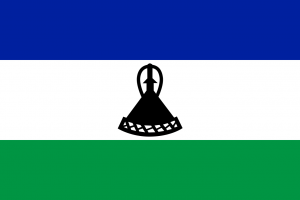Language/Southern-sotho/Vocabulary/Colors
Hi Southern Sotho learners! 😊
In this lesson, we will learn the Southern Sotho vocabulary for colors. Colors play an important role in every language, as they are used to describe objects, emotions, and nature. Southern Sotho colors are unique and beautiful, and they have a rich cultural significance. By learning these words, you will be able to describe the world around you accurately and connect with native speakers on a deeper level.
Don't hesitate to look into these other pages after completing this lesson: Food, Count to 10 & Express Surprise.
Basic colors[edit | edit source]
Let's start with the basic colors. The words for colors in Southern Sotho are short and easy to remember.
| Southern Sotho | Pronunciation | English |
|---|---|---|
| Ntsho | n-'tʃʰɔ | Red |
| 'Nwele | ʔn-wɛ-lɛ | Green |
| 'Ngoana | ʔ-mɣʷa'na | Blue |
| 'Nonyane | 'nɔ-'ɲa-nɛ | Yellow |
| 'Nono | 'nɔ-nɔ | White |
| 'Nto | ʔ-n-tʰɔ | Black |
- Person 1: Ke ntlhoa. (I am wearing black.)
- Person 2: Ke tla se ntlhoha ha se etsahatse ke nchadiswa. (I will wear black too since I'm mourning.)
Ntsho is usually associated with danger and warning signs. Green is a very important color in Southern Sotho culture, as it represents growth, prosperity, and the environment. 'Ngoana is the color of the sky and the sea, and it is often used to describe peaceful and calm situations. 'Nonyane is a bright and cheerful color, which represents the warmth of the sun and the joy of life. 'Nono is the color of purity, cleanliness, and innocence, while 'Nto conveys a sense of darkness, mystery, and mourning.
Other colors[edit | edit source]
Apart from the basic colors, there are many other shades and hues in Southern Sotho language. Here are some of the most common ones.
| Southern Sotho | Pronunciation | English |
|---|---|---|
| Mahlakore | ma-'hla-kʰɔɾɛ | Orange |
| Leqepheng | lɛ-'kʰɛ-pʰeŋ | Brown |
| Setšoantšo | sɛt-ʃʰwa-'n-ʃɔ | Pink |
| Pula | pʰu-la | Grey |
| Ntjhebapele | n-tʃʰəba-'pʰɛ-lɛ | Maroon |
| 'Ntšebo | ʔ-tsʰɛ-bɔ | Purple |
- Person 1: Ke se ntlhoa, ke re ke tla se lemoha mahlakore. (I'm not wearing black, I think I will wear orange.)
- Person 2: Ke re ke lapa leqepheng ka eona, ke ea se sa fumane sephetho. (I like clothes in brown, I can't find anything black.)
Mahlakore is a warm and vibrant color, which symbolizes confidence, enthusiasm, and friendliness. Leqepheng is a dark and earthy color, which is often associated with nature and stability. Setšoantšo is a delicate and feminine color, used to express sweetness and affection. Pula is a neutral and dull color, which represents sadness, neutrality, and indifference. Ntjhebapele is a deep and rich color, which is commonly used in traditional clothing and decorations. 'Ntšebo is a rare and special color, which represents royalty, luxury, and spirituality.
Idioms and Expressions[edit | edit source]
Colors are also used in many idioms and expressions in Southern Sotho. Here are some examples:
- "Ha ke sa ntjhebapele ke sa fumane melato ea ka." (When I don't wear maroon, I can't find my shoes.) This idiom is used when someone is feeling lost or disoriented.
- "Bohloko ba noka efe ke ntjhebapele?" (What kind of problems does maroon have?) This expression is used when someone is asking about the difficulties or obstacles someone is facing.
Conclusion[edit | edit source]
By learning the Southern Sotho vocabulary for colors, you will be able to express yourself more accurately and connect with native speakers on a deeper level. Colors play an important role in Southern Sotho culture, and they have a rich significance and symbolism. If you want to learn more about Southern Sotho culture and language, you can visit the Polyglot Club website and find native speakers to practise with. You can also check out the Vocabulary section of our Southern Sotho course for more words and expressions.
➡ If you have any questions, please ask them in the comments section below.
➡ Feel free to edit this wiki page if you think it can be improved. 😎
Congratulations on finishing this lesson! Explore these related pages to keep learning: Say Hello and Greetings in Southern Sotho, Fruits & Feelings and Emotions.
Other Lessons[edit | edit source]
- Food
- How to say Good Bye?
- Fruits
- Drinks
- How to Say Hello and Greetings
- Feelings and Emotions
- Animals
- Express Surprise
- Count to 10

